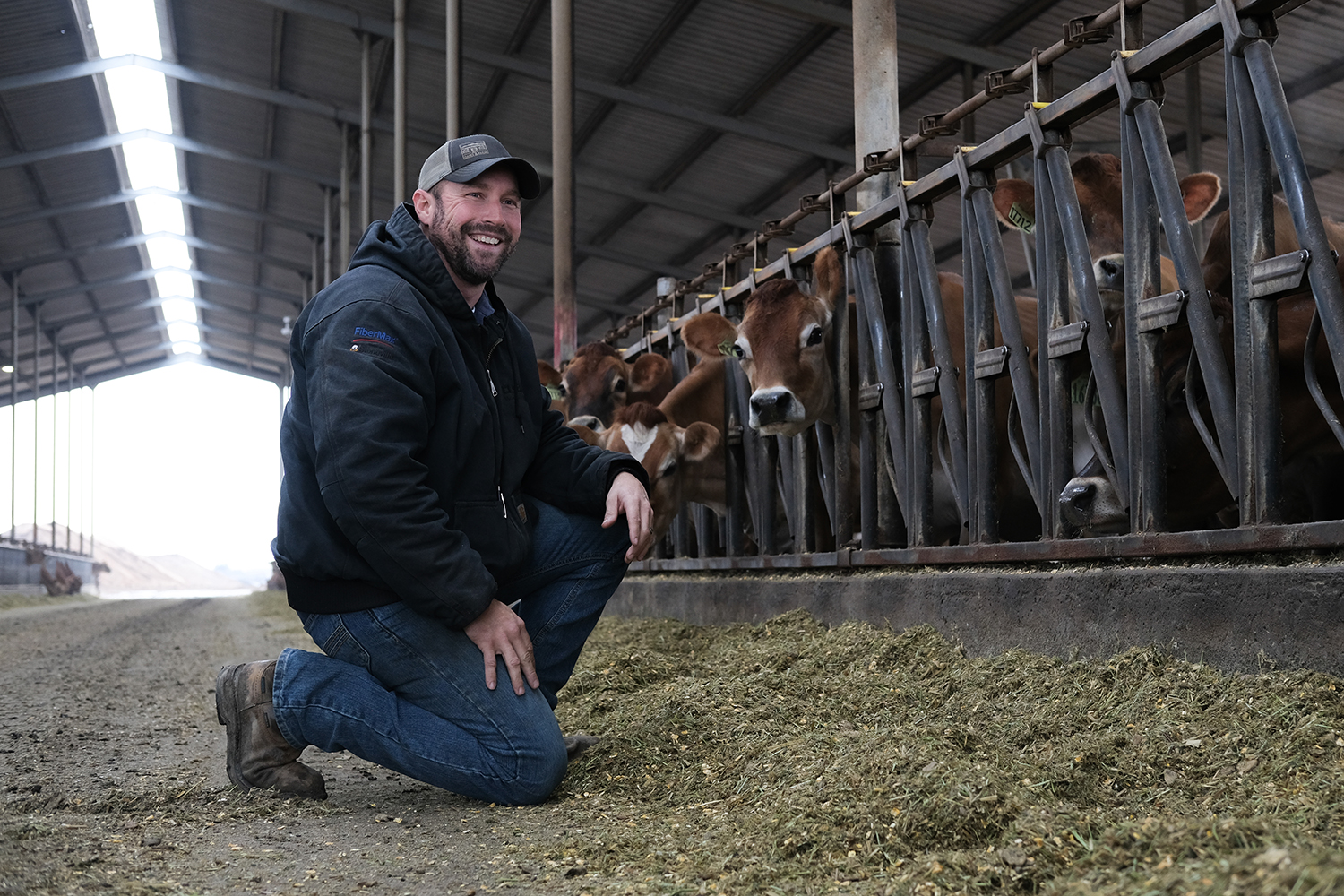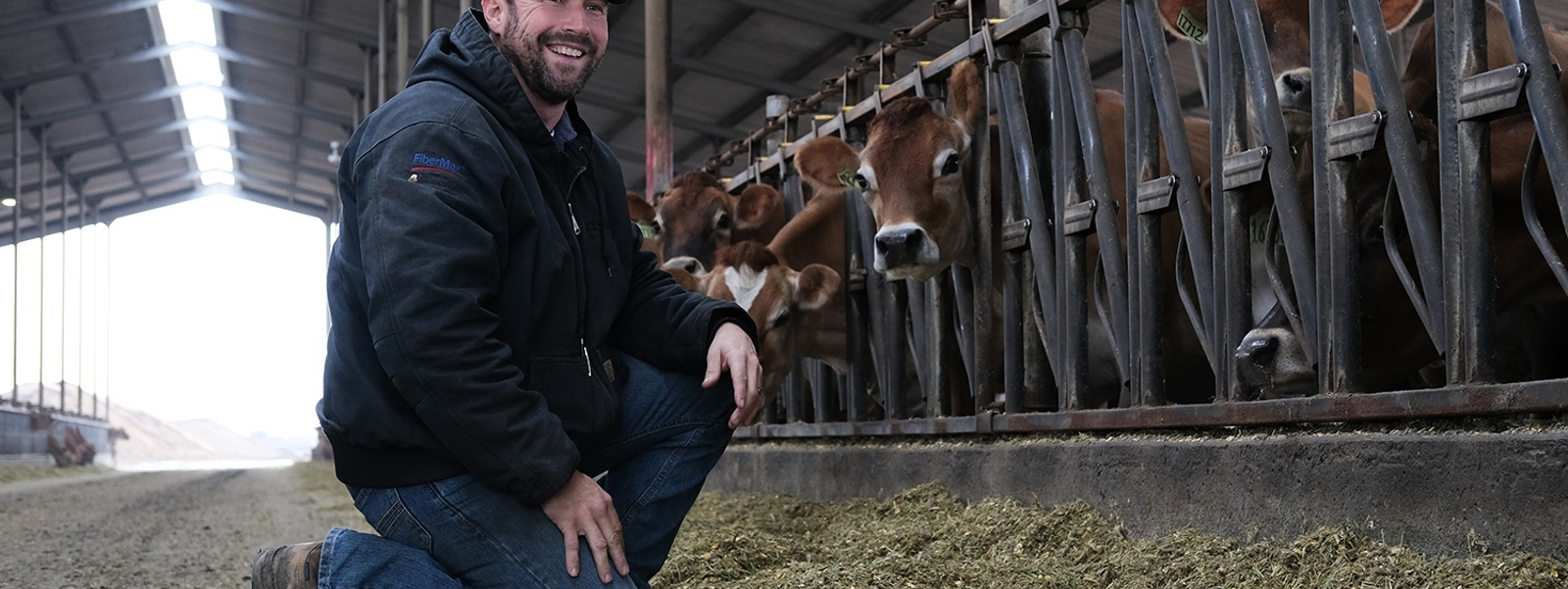From the Fields: Blake Wilbur, Tulare County dairy and tree nut farmer

Blake Wilbur
Photo/Caleb Hampton

By Blake Wilbur
Tulare County dairy and tree nut farmer
Our dairy has 1,600 milking Jersey cows. We’re a Land O’Lakes shipper. A lot of our trucks go to Saputo, and the milk gets made into cheese. We also grow almonds and pistachios and most of our own forage.
Right now, it’s water, water, water. We’re going into the hottest time of the season so far. Nuts are filling and developing. If you lose the opportunity to irrigate intensely, it can affect yields. The almonds look like an average year. Prices are recovering after losing money the last couple years. The pistachio orchards look heavy. I’m hoping for an above-average crop.
We have a groundwater allocation, which limits how much we can pump. When you add it to the surface water we’re getting this year, you can cover most of the crops you would likely grow in the area. At the moment, we’re buying our alfalfa instead of growing it because of its water use and the economics of the hay market.
Feed prices in general have been trending down. It’s the biggest expense on a dairy farm, and it affects our bottom line the most. Milk prices are good enough; we should be making a little money this year. It helps that beef prices are so high. That’s a serious money maker. When cows’ milk has dropped off, they are sold to the beef market. Dairy cattle prices are also high, and we’ve been able to sell excess replacement animals that are often first or second lactation. Prices for those are extremely high.
We caught bird flu last fall and saw milk flow reduce by 25% for two to three weeks. We, fortunately, did not lose many, if any, cows. Dairies with Holsteins suffered worse, and those that got bird flu during the summer heat fared much worse. Our cows have bounced back. Our milk production is actually higher now than it was at this time last year. We had a very nice spring, and coming into summer June was not tough on the cows.




